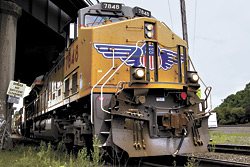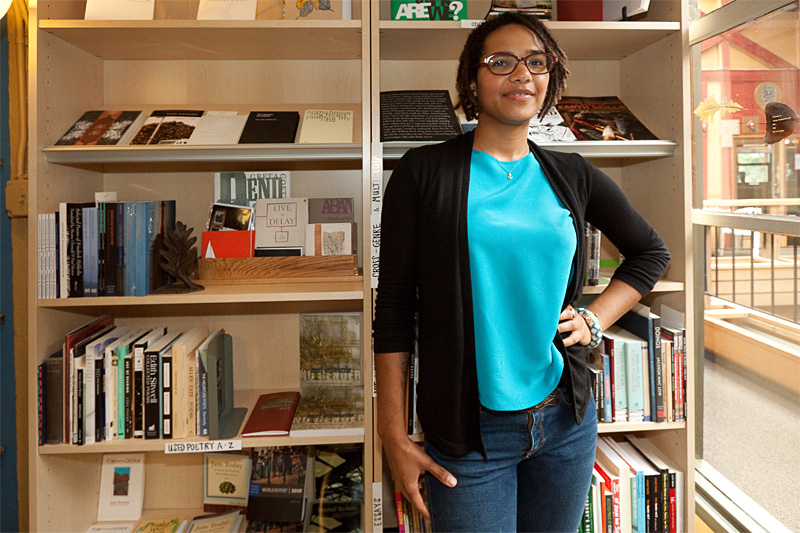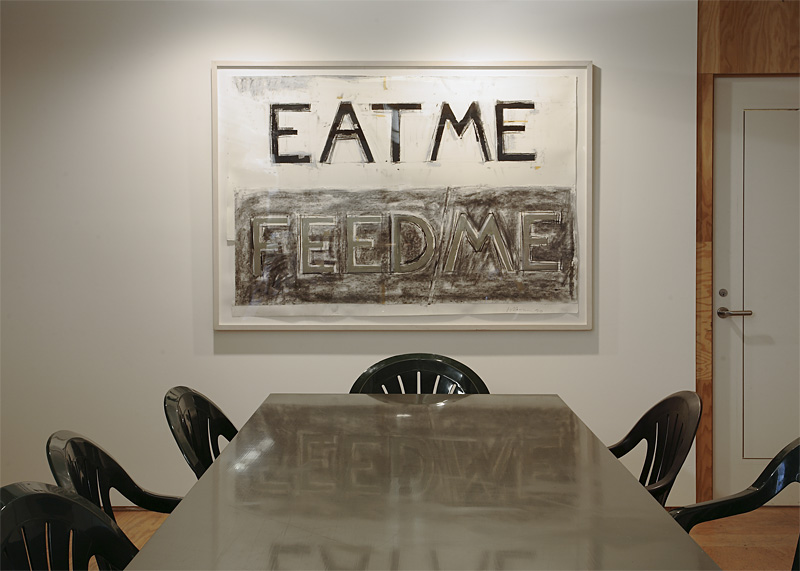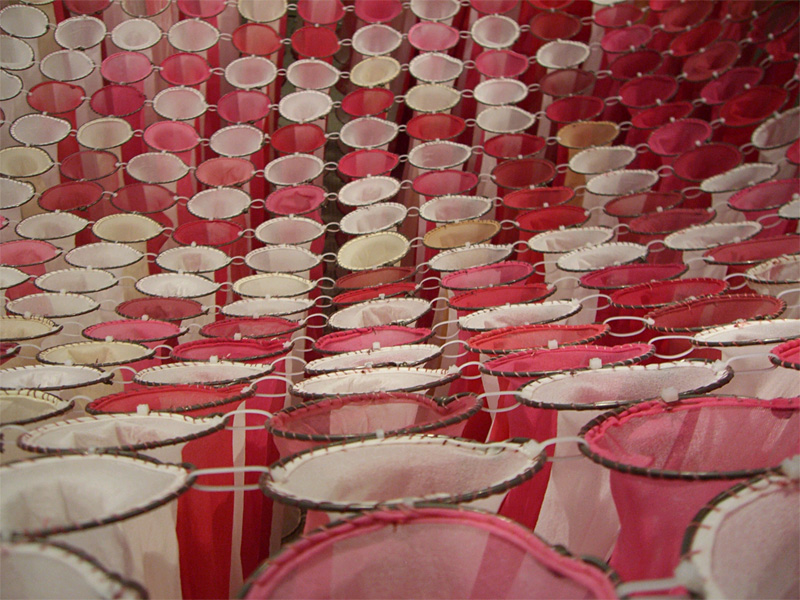If you live in Seattle’s South End, you might encounter postcard-size flyers, photocopied from handmade linoleum prints, advertising Seattle Train Yard Bike Tours. Beginning at Georgetown’s All City Coffee, you’ll be guided on a three-hour tour led by Cameron, a 30-year-old self-taught train aficionado. By the end of the tour—which snakes through SoDo and along the waterfront, past the grain elevators near Elliott Avenue, and ending up in Interbay—you’ll know how to read the trains. You’ll be able to tell a road engine from a yard engine, you’ll know what The Stinker is and where it’s headed, and you’ll get a glimpse into the workings of our economy, based on what’s moving where along the rails.
Trains may seem like old technology, but there’s still a phenomenal amount of freight being shipped through Seattle in the containers that sit stacked at our ports, trundling past Shilshole Bay and clogging traffic near the sports stadiums. Despite the rattle of the rail cars and the engine’s blaring horns, much of this commerce goes unseen.
An affable, articulate former grad student, Cameron (who prefers not to give his surname—or have his photo taken) has been leading these tours on and off for the past four years. He’s a lifelong Seattle resident, who most recently lived aboard a boat in Ballard. “The train tour is easy,” he says. “I can do all that off the top of my head. Though it’s always evolving.”
As Cameron explains on his tour, which I took this spring, trains are labeled with code, and if you watch long enough you can see where they come from and where they’re going, as well as what commodities are being shipped to which parts of the world. Individual rail cars, varied in shape, number, and purpose, reveal stories about their contents. If you’re paying attention, these patterns are easy to unravel.
One of the most striking things you learn to identify is the garbage train. Several of these run every day, sometimes as many as three a day, each of them between a half-mile to more than a mile long. They’re called, by the people who run them, The Stinkers. Despite the moniker, it’s not obvious that they’re hauling trash, but as soon as you learn to identify one, you’ll see them constantly.
One of Cameron’s goals is “to be able to understand our society and our economy by looking at its shipping.” He’ll point out the trains coming from Canada and headed to Chicago. “Pretty much everyone knows we have a trade deficit with China,” Cameron says. But the rattling, empty, sometimes even containerless rail cars make this fact tangible.
Cameron possesses no formal economics background, saying “I just glean what I can from reading this or that.” He rejects the role of expert. “You might not know that much about something, but if you know more than someone else,” he explains, laughing, “you can make them think that you have this huge, global understanding.”
The fact that you have to get into the scruffier parts of the city and poke around either by bike or on foot—staying off the tracks, of course, as that’s railroad property—means that you’re getting first-hand experience of Seattle in a way that most people don’t. And it doesn’t have to be high-minded: “It’s a way to get out and enjoy a bike ride, and maybe even learn something about the city,” our tour guide says.
Cameron’s other tours include a winter bike ride exploring conifers and a course on maples, as well as a new, soon-to-be-launched tour of Seattle Center, lower Queen Anne, and Belltown called “Space Pirates of the 21st Century.”
Cameron is also dismounting for some tours on foot. He offers a non-touristy take on one of the most famous neighborhood tours in Seattle. His version, which also goes underground, is called “The Secret Seattle Walking Tour.” “You will learn about the local Duwamish Indian tribe,” his Web site promises, “the economic development and environmental degradation of Seattle, labor unions and their struggles against corporate power as well as racism and sexism within labor unions, the experiences of different non-white immigrant groups, repression of political radicals and leftists throughout Seattle history, more recent gentrification and homelessness issues, or whatever you want.” Like the bike tour I went on, this tour will be open-ended, its content directed as much by the questions of its participants as by what its leader has been reading that week.
“All of the information I provide can be found in books,” Cameron explains, “but what I am doing is a quicker, more accessible way of learning these stories—with the added element of being in the place you’re learning about.”
For contact information and tour dates, visit www.kehoe.org/seattletours. Cameron’s in the process of updating his site, but, he promises, there will be more tours this summer.








